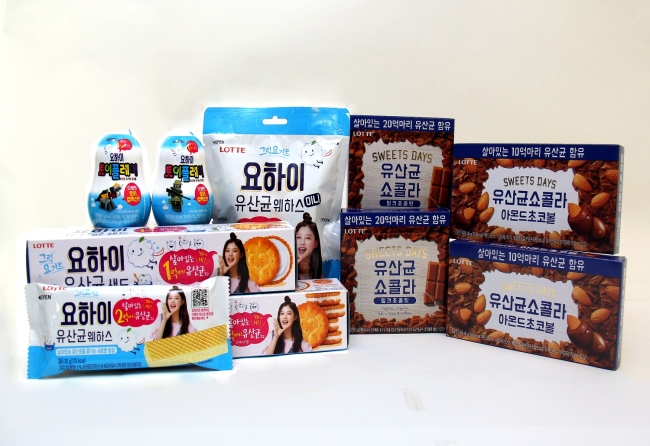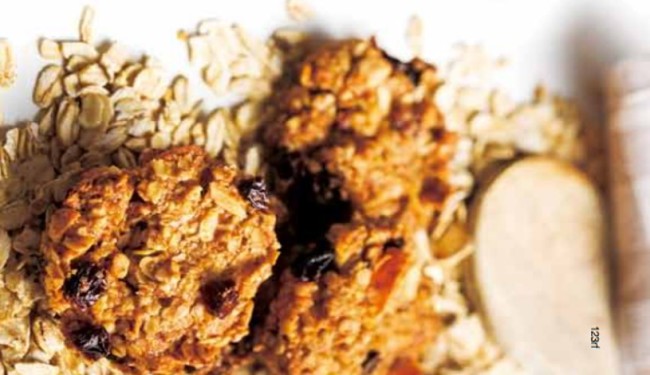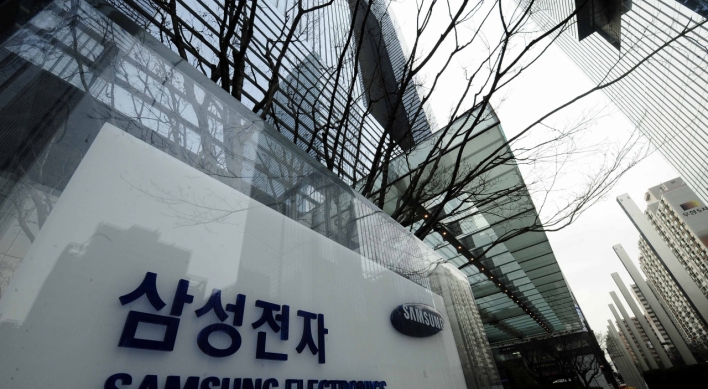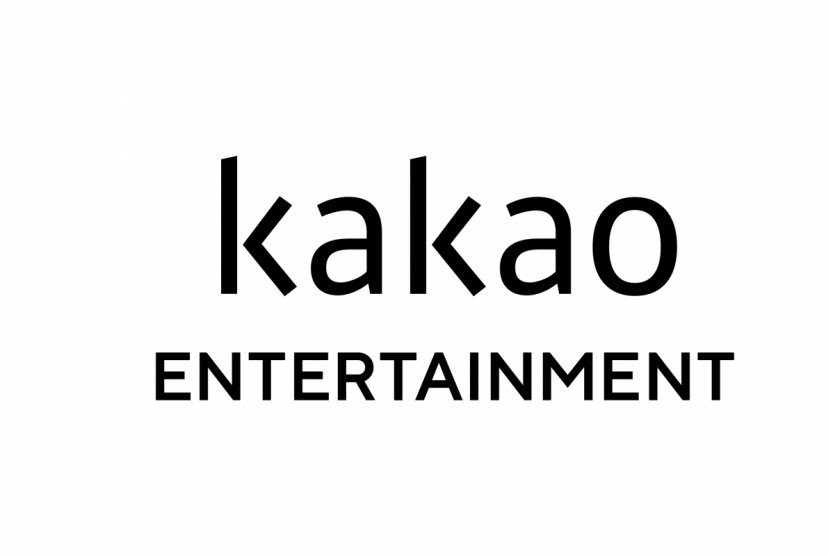[Weekender] Snacking goes hybrid
Snacks evolve with unlikely mixtures, healthful ingredients and humorous marketing
By Won Ho-jungPublished : Jan. 20, 2017 - 16:36
Whether you have a sweet tooth or cravings for all things savory, snacking options in South Korea were limited until recently.
Riding on the health-conscious trend, sugar-loaded sweets are evolving into healthy desserts and snacks with humorous marketing to appeal to a wider consumer age range.
Salty crisps are also being transformed by reducing trans fat and being infused with unlikely ingredients or dishes, such as seaweed and kimchijjigae, or Korean kimchi stew.
Gwaja, or snacks in Korean, refer mainly to prepackaged and mass-produced confectionery that range from cookies to biscuits, grain bars, crackers and chips.
“After I went to college, I stopped having snacks for a while because they were too sweet,” said 34-year-old Cho Hee-yun, who lives in Seoul. “But recently I’ve started buying snacks for myself again because the newer snacks aren’t too sweet and they are made with ingredients that are good for you.”
One of the first companies to ignite the trend was confectionery maker Orion, best known worldwide for its Choco Pies. In 2007 and 2008, the company launched new lines of snacks called Dr. You and Market O that touted more healthy ingredients.
Dr. You targeted mothers looking for healthful snacks for their children, using Seoul National University professor Dr. You Tae-woo as a spokesmodel for the nutritional balance in its snacks and nut bars. Market O put a healthy twist on traditional confections such as brownies and chips, emphasizing the high content of unprocessed ingredients such as real chocolate and cheese.
Riding on the health-conscious trend, sugar-loaded sweets are evolving into healthy desserts and snacks with humorous marketing to appeal to a wider consumer age range.
Salty crisps are also being transformed by reducing trans fat and being infused with unlikely ingredients or dishes, such as seaweed and kimchijjigae, or Korean kimchi stew.
Gwaja, or snacks in Korean, refer mainly to prepackaged and mass-produced confectionery that range from cookies to biscuits, grain bars, crackers and chips.
“After I went to college, I stopped having snacks for a while because they were too sweet,” said 34-year-old Cho Hee-yun, who lives in Seoul. “But recently I’ve started buying snacks for myself again because the newer snacks aren’t too sweet and they are made with ingredients that are good for you.”
One of the first companies to ignite the trend was confectionery maker Orion, best known worldwide for its Choco Pies. In 2007 and 2008, the company launched new lines of snacks called Dr. You and Market O that touted more healthy ingredients.
Dr. You targeted mothers looking for healthful snacks for their children, using Seoul National University professor Dr. You Tae-woo as a spokesmodel for the nutritional balance in its snacks and nut bars. Market O put a healthy twist on traditional confections such as brownies and chips, emphasizing the high content of unprocessed ingredients such as real chocolate and cheese.

Called the “fifth step” in Orion’s strategy by the company, Market O aims for “zero percent synthetic additives,” making its products with “raw materials sourced from organic farms in Korea,” according to the company’s annual report.
“The snack market did not move right away when we launched these products, but after a couple of years the market moved toward the health trend,” a spokesperson for Orion said.
Market O went on to become a sensation among Chinese visitors in Korea and Orion currently exports its products to China directly, gaining a foothold into China’s premium confectionery market.
The success led other companies to follow suit by using fewer processed ingredients and reducing trans fat. The most notable competition comes from Lotte Confectionery, which launched its Farm on the Road line in 2014 with premium ingredients such as fruits and almonds brought in from overseas.
Recently, Lotte Confectionery picked up a patent for snacks that included the lactic acid bacteria found in kimchi. The bacteria was infused into products such as chocolates and cream crackers, providing health benefits through the snacks.
The sales potential of snacks catered for grown-up consumers has also launched fierce competition to find the best new flavors, causing trends to move faster than ever.
In 2014, Haitai created a craze with its honey butter potato chips, introducing honey as an alternative sweetener to sugar. Last year, Orion’s Choco Pie unleashed its banana-flavored Choco Pies. That trend was quickly followed up by green tea-flavored snacks late last year.

The baton has now been passed on to convenience stores, which are launching their own special snacks targeted toward trend-savvy young consumers in collaboration with food manufacturers. The growth in one-person households and the corresponding rise in sales at convenience stores means that this will become an increasingly important distribution channel for confectionery companies.
Major convenience stores, such as CU, GS25 and 7-Eleven have released unique flavored snacks, such as kimchi jjigae, soy sauce chicken, and Japanese takoyaki under their own private brands. Other products have targeted working Koreans with satirical images on their packaging that poke fun at the stress caused by office life. These products are aimed at consumers in their 20s and 30s who gravitate toward new, creative ideas.
“In our snack lineup, we are increasingly looking for products that are likely to cause a buzz on social media,” said a spokesperson for 7-Eleven, noting that sales for humorous products spike once they go viral on social networks. “We have our steady sellers, but trendiness is definitely also on the radar.”
Distributors, however, also note that decades-old best-sellers still maintain their sturdy loyal consumer base with their taste and packaging unchanged or just slightly tweaked to cater to those who still reach for the nostalgic snacks that they grew up eating.
Saewookkang, for instance, has been a constant best-seller since it was launched in 1971, with an accumulated 7.7 billion packs sold as of last year.
By Won Ho-jung (hjwon@heraldcorp.com)


![[KH Explains] No more 'Michael' at Kakao Games](http://res.heraldm.com/phpwas/restmb_idxmake.php?idx=644&simg=/content/image/2024/04/28/20240428050183_0.jpg&u=20240428180321)



![[Grace Kao] Hybe vs. Ador: Inspiration, imitation and plagiarism](http://res.heraldm.com/phpwas/restmb_idxmake.php?idx=644&simg=/content/image/2024/04/28/20240428050220_0.jpg&u=)
![[Herald Interview] Mom’s Touch seeks to replicate success in Japan](http://res.heraldm.com/phpwas/restmb_idxmake.php?idx=644&simg=/content/image/2024/04/29/20240429050568_0.jpg&u=)


![[News Focus] Lee tells Yoon that he has governed without political dialogue](http://res.heraldm.com/phpwas/restmb_idxmake.php?idx=644&simg=/content/image/2024/04/29/20240429050696_0.jpg&u=20240429210658)







